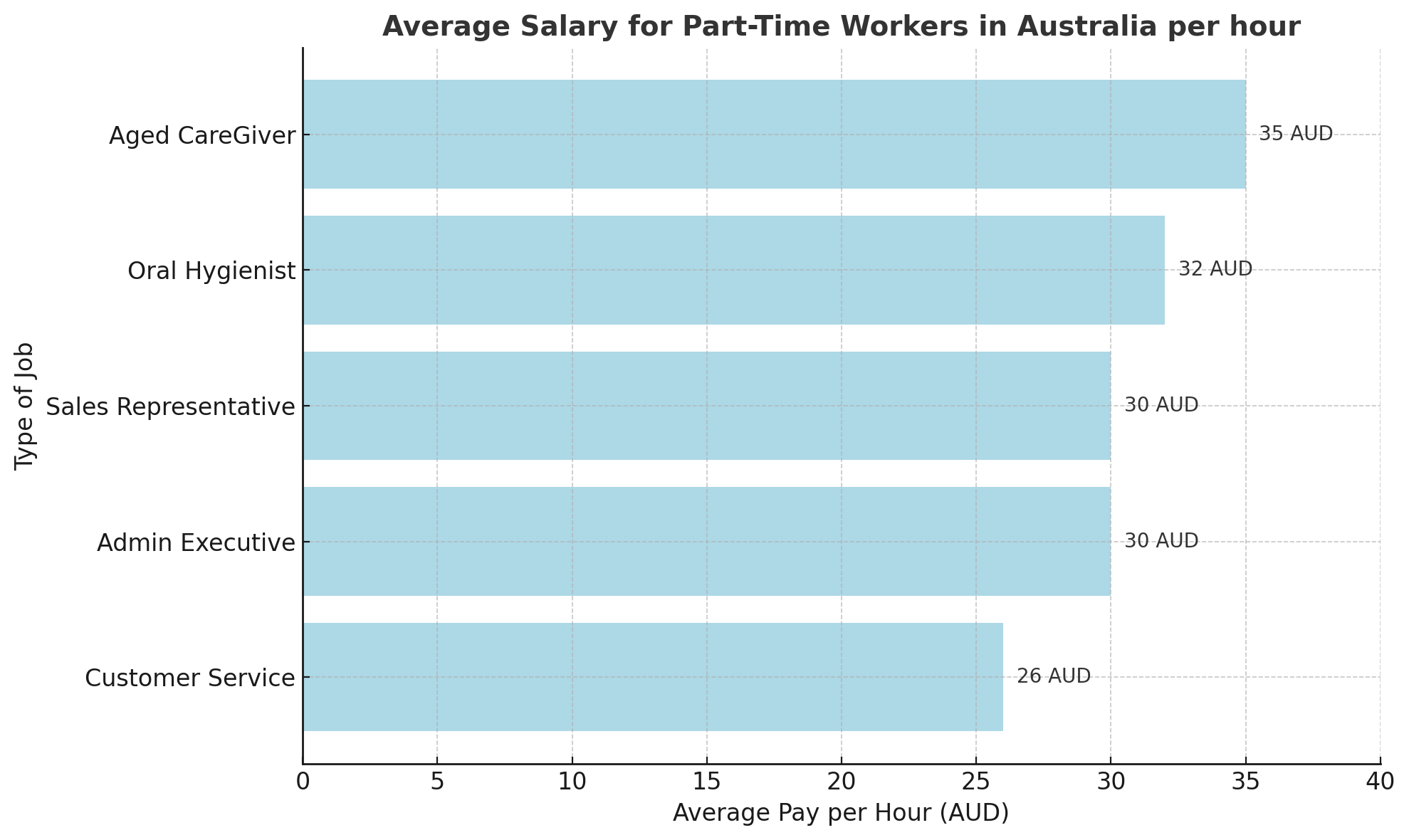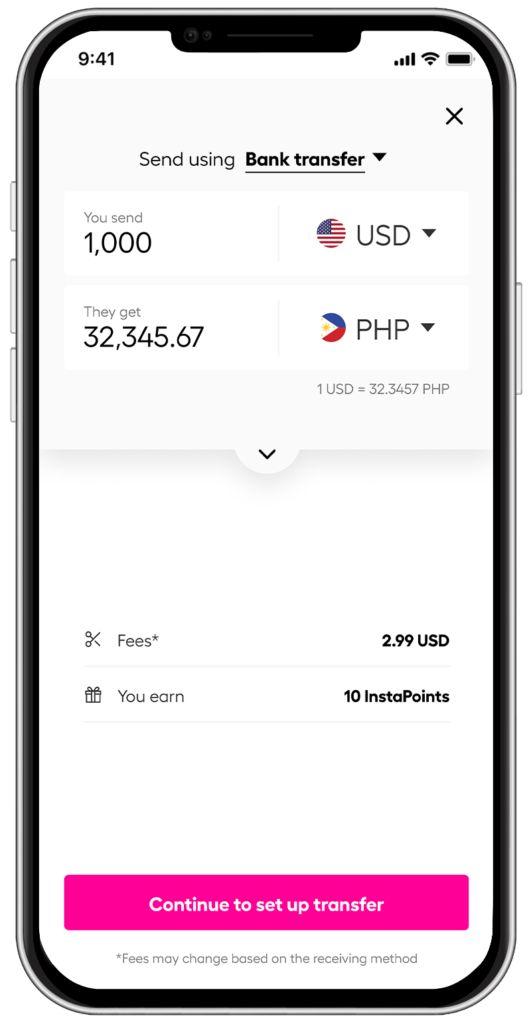Average salary in Australia in 2025 – The ultimate guide

This article covers:
- Quick Facts:
- Factors Affecting Salaries
- Industry Wise Average Weekly Salary in Australia (Full-Time Employees)
- Average Salary for Full-Time Worker in Australia – Top Sectors
- Average Salary for Part-Time Workers in Australia
- Average Salary in Australia: State Wise
- Lowest/Minimum Paying Jobs in Australia
- Salary for Experience
- Key takeaways…
The average salary in Australia for full-time workers is around AUD 1,00,000 annually. On the other hand, the average salary for part-time workers in Australia is around AUD 67,554 annually.
Australia has a thriving economy. Hence, the average salary in Australia is among the best in the world. Apart from lucrative salaries, excellent work-life balance, booming career opportunities and a higher standard of living are among some other factors that makes Australia a highly sought-after work destination for expats.
The guide below shall help you learn more about salary in Australia in various sectors, provincial salary variations and the key factors that affect the same.
Quick Facts:
- As per Morgan Mckinley, 60% of employers in Australia plan to offer increased salaries for certain critical roles.
- About 52% of professionals in Australia are optimistic about increased salaries in 2025.
Factors Affecting Salaries
- Education level: Salary by education level is one of the most important factors determining the salary pay scale.
- Experience and skills: Typically, the longer you are involved in a job, the more productive you get. The skill sets get more refined, and the ability to handle tasks and challenges at work improves.
- Geographical location: Some cities and states offer higher salaries for the same job. This is because the cost of living plays an important role in determining salary.
- Demand and supply, inflation and government regulations: The workforce demand and supply, prevailing inflation rates, and changes in government regulations on wages are some economic factors affecting salaries.
- Labour unions: In some organisations or areas, labour unions have a proactive role and higher bargaining strength that influence employee salary.
- Employer: Salaries predominantly vary based on industry, job profile and employer. But, within the same industry, the employer’s ability to pay depending on the clientele and working conditions plays a vital role.
Must Read: Top 10 Part-time Jobs for Students in Australia 2024
Industry Wise Average Weekly Salary in Australia (Full-Time Employees)
Below is the industry-wise average salary data of Australia.

Industry | Average Weekly Ordinary Time Earnings (AUD) |
Mining | 3,015.30 |
Information media & telecommunications | 2,437.20 |
Professional, scientific & technical services | 2,245.40 |
Financial & insurance services | 2,283.20 |
Electricity, gas, water & waste services | 2,243.80 |
Public administration & safety | 2,036.10 |
Education & Training | 2,026.40 |
Health care & social assistance | 1,902.40 |
Construction | 1,821.80 |
Transport, postal & warehousing | 1,893.20 |
Rental, hiring & real estate services | 1,789.60 |
Wholesale trade | 1,790.60 |
Arts & recreation services | 1,797.30 |
Manufacturing | 1,706.70 |
Administrative & support services | 1,723.70 |
Retail trade | 1,454.50 |
Other services | 1,457.80 |
Accommodation & food services | 1,421.00 |
Source: Australian Bureau of Statistics
Average Salary for Full-Time Worker in Australia – Top Sectors
With the cost of living increasing every year, understanding Australian salary trends has become important. Also, to set realistic goals, knowing about the average income in Australia is essential.
Let us look at the Australian salary comparison of top sectors. The table below shows the sectors with the highest average salary in Australia per month and year for a full-time employee.
Sectors | Average Salary in Australia Per Month (AUD) | Average Salary in Australia Per Year (AUD) |
Engineering | 9,593 | 115,111 |
Information Technology | 9,216 | 110,587 |
Science | 8,995 | 107,937 |
Healthcare, Pharmaceutical & Social Services | 8,923 | 107,071 |
Banking, Finance & Insurance | 8,878 | 106,539 |
Source: Talent
Must Read: How much does it cost to live in Australia?
Let us now look at the average wage in Australia in the top 5 jobs in each sector.
Sector 1: Engineering
Top Job Profiles | Average Annual Salary (AUD) |
Mining Engineer | 145,000 |
Project Engineer | 125,020 |
Software Engineer | 125,000 |
Electrical Engineer | 120,000 |
System Engineer | 119,792 |
Source: Talent
Sector 2: Information Technology
Top Job Profiles | Average Annual Salary (AUD) |
Back-end Developer | 140,000 |
Front-End Developer | 124,552 |
Full-Stack Developer | 124,526 |
UX/UI Designer | 115,000 |
Database Administrator | 112,407 |
Source: Talent
Sector 3: Science
Top Job Profiles | Average Annual Salary (AUD) |
Physicist | 128,739 |
Geologist | 124,500 |
Data Scientist | 122,212 |
Mathematician | 109,500 |
Biologist | 104,247 |
Source: Talent
Sector 4: Healthcare, Pharmaceutical & Social Services
Top Job Profiles | Average Annual Salary (AUD) |
Cardiologist | 214,393 |
Psychiatrist | 190,624 |
Doctor/Physician | 185,250 |
Surgeon | 178,970 |
Dentist | 150,000 |
Source: Talent
Sector 5: Marketing and Sales
Top Job Profiles | Average Annual Salary (AUD) |
Insurance Underwriter | 221,250 |
Branch Manager | 124,488 |
Actuarial | 116,506 |
Investment Advisor | 114,828 |
Economist | 114,828 |
Source: Talent
Average Salary for Part-Time Workers in Australia
According to the Labour Force data for December 2024, released by the Australian Bureau of Statistics (ABS), below are the two major findings related to the part-time workforce in the country.
- The number of people working part-time increased by 80,000 to 4,546,800 in December 2024.
- Part-time employees currently account for 31% of the total workforce.
A part-time worker’s average per-hour salary in Australia is AUD 34.64 or AUD 67,554 annually. It must be noted that the part-time salary also varies from one individual to another based on factors like industry and job profile, skills, location, etc.
The top 5 highest-paying part-time jobs for students in Australia are:

Type of Job | Average Pay per Hour (AUD) |
Aged CareGiver | 35 |
Oral Hygienist | 32 |
Admin Executive | 30 |
Sales Representative | 30 |
Customer Service | 26 |
Also Read: Australian citizenship for Indians 2024
Average Salary in Australia: State Wise
According to the Average Weekly Earnings report by the Australian Bureau of Statistics, released in September 2024, the full-time average weekly ordinary time earnings for individuals was AUD 1,923.40, a 4.6% increase from the previous year.
Below are the state-wise or provincial salary variations in Australia.
State | Average Weekly Ordinary Time Earnings | ||
Total (AUD) | Males (AUD) | Females (AUD) | |
Overall Australia | 1,923.40 | 2,014.30 | 1,782.80 |
Western Australia | 2094.30 | 2,257.60 | 1,819.70 |
Australian Capital Territory | 2,126.50 | 2,215.30 | 2,027.30 |
Victoria | 1,882.00 | 1,962.70 | 1,757.40 |
New South Wales | 1,935.70 | 2,013.00 | 1,814.90 |
Queensland | 1,901.00 | 2,002.10 | 1,750.60 |
Northern Territory | 1,845.80 | 1,976.30 | 1,712.10 |
South Australia | 1,776.90 | 1,843.20 | 1,662.20 |
Tasmania | 1,710.80 | 1,741.60 | 1,654.70 |
Highest Paying Jobs in Australia
As of November 2024, the employment-to-population ratio in Australia remained at 64.4%, as per the Labour Force Australia report. This ratio provides the measure of employment in relation to the size of the population.
Some of the highest-paying jobs in Australia are:
Job Title | Average Annual Salary (AUD) |
Anaesthetist | 323,020 |
Ophthalmologist | 302,332 |
Vice President of Compliance | 260,219 |
Chief Financial Officer | 251,317 |
Chief Executive Officer | 230,300 |
Source: Indeed
Disclaimer: Values are converted from USD to AUD on 15th Jan at 22:00 HRS (IST) using the below conversion tool
https://www.forbes.com/advisor/in/money-transfer/currency-conversion-calculator/
Lowest/Minimum Paying Jobs in Australia
The national minimum wage is the minimum base wage you are entitled to earn in Australia. As of 1st July 2024, the national minimum wage in Australia for full-time workers is AUD 24.10 per hour or AUD 915.90 per week.
This minimum wage rate, however, does not include the following categories of workers:
- Junior workers (under 21 years)
- Supported Wage System workers
- Apprentices and trainees
Below are some of the lowest-paying jobs in Australia:
Job Title | Average Annual Salary (AUD) |
Beauty Therapist | 63,094 |
Food Trades Assistant | 82,834 |
Laundry Worker | 87,511 |
Dishwasher | 87,769 |
Fast-food Cook | 88,429 |
Source: Indeed
Disclaimer: Values are converted from USD to AUD on 17th Jan at 09:21 HRS (IST) using the below conversion tool
https://www.forbes.com/advisor/in/money-transfer/currency-conversion-calculator/
It is essential to understand that the jobs mentioned above are typically part-time and mainly offered to students or individuals without formal degrees. Many people prefer working in multiple part-time jobs to make ends meet. Also, the above-mentioned hourly rates are the basic salary in Australia, which does not include tipping.
Salary for Experience
Experience indeed plays an important factor in determining how much an individual earns. Hence, many employees expect that their pay will increase by gaining more experience and new responsibilities.
For example, an entry-level software engineer may earn around AUD 1,00,000 annually, and a senior software engineer can earn around AUD 173,910 in Australia.
Key takeaways…
Australia’s strong economy and impressive salary trends make it an appealing destination for individuals seeking a job abroad. Understanding the average salary in Australia across different industries helps you negotiate better and plan a thriving career.
However, moving to Australia also requires mindful financial planning and research, especially when it comes to the best options to send money from Australia.
Whether you are supporting your family back home or need to make overseas arrangements for accommodation, Instarem is your go-to solution. Instarem simplifies overseas transactions with its low-cost#, fast*, easy and transparent fund transfer services.

*rates are for display purposes only
Try Instarem for your next transfer.
Download the app or sign up here.
Other Related Blogs:
Disclaimer: This article is intended for informational purposes only. All details are accurate at the time of publishing. Instarem has no affiliation or relationship with products or vendors mentioned.


























